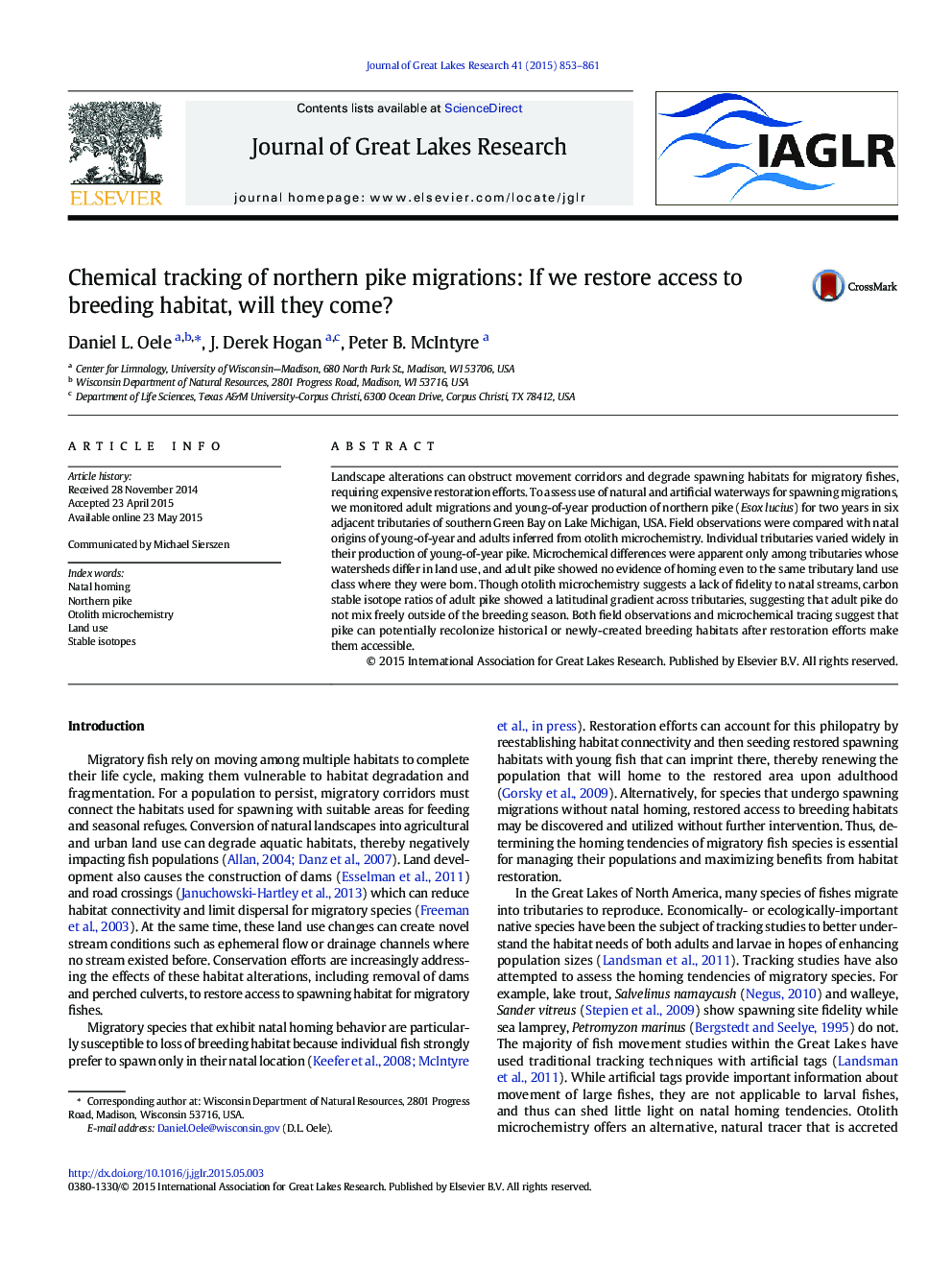| Article ID | Journal | Published Year | Pages | File Type |
|---|---|---|---|---|
| 6304967 | Journal of Great Lakes Research | 2015 | 9 Pages |
Abstract
Landscape alterations can obstruct movement corridors and degrade spawning habitats for migratory fishes, requiring expensive restoration efforts. To assess use of natural and artificial waterways for spawning migrations, we monitored adult migrations and young-of-year production of northern pike (Esox lucius) for two years in six adjacent tributaries of southern Green Bay on Lake Michigan, USA. Field observations were compared with natal origins of young-of-year and adults inferred from otolith microchemistry. Individual tributaries varied widely in their production of young-of-year pike. Microchemical differences were apparent only among tributaries whose watersheds differ in land use, and adult pike showed no evidence of homing even to the same tributary land use class where they were born. Though otolith microchemistry suggests a lack of fidelity to natal streams, carbon stable isotope ratios of adult pike showed a latitudinal gradient across tributaries, suggesting that adult pike do not mix freely outside of the breeding season. Both field observations and microchemical tracing suggest that pike can potentially recolonize historical or newly-created breeding habitats after restoration efforts make them accessible.
Related Topics
Physical Sciences and Engineering
Earth and Planetary Sciences
Earth and Planetary Sciences (General)
Authors
Daniel L. Oele, J. Derek Hogan, Peter B. McIntyre,
